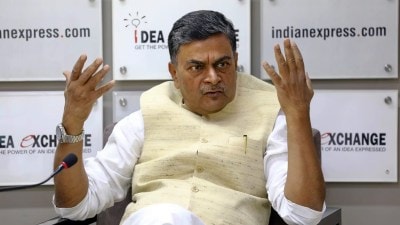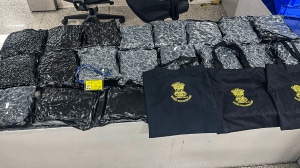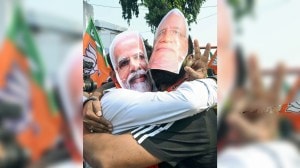The Discovery of India
In this season of a disputed Rail Budget,a British Indians account of travelling around the country in trains,trying to reconcile the India poised to be an economic superpower with an India that refuses to move on.
In this season of a disputed Rail Budget,a British Indians account of travelling around the country in trains,trying to reconcile the India poised to be an economic superpower with an India that refuses to move on.
Maam,please come inside and sit in the shade,already you are looking little dark. After two months,three weeks and 62 train journeys,I was now used to such comments. But perching in an open doorway with a Chetan Bhagat paperback and the sun on my cheeks had become a ritual. When compared with,How much money is your brother making?,Why are you avoiding marriage?,and Mummy-daddy allowing you to travel alone?,the comment on my rapidly developing tan was positively a compliment.
Four months earlier,my sallow face and I had been sitting at my desk in London when I came across an article detailing how Indias domestic airlines could now connect over 80 cities. Twenty years ago,my family had returned to India to try and settle,but after two traumatic years in Madras,we had hotfooted it back home to England. At that time,Jet Airways had only just arrived as a rival to Indian Airlines. Now India was shining. Its countrymen were expounding its potential to overtake everyone as the fastest-growing economy,and yet,for all its sprawling malls,Costa Coffee shops and Burberry outlets,this was still a country where,in a village in Orissa,a two-year-old boy could be married off to a dog called Jyoti to ward off evil spirits and rid the bad omen of his rotting tooth.
I was fascinated. I wanted to see for myself what the fuss was about,but there had to be a way to travel around the country without leaving a gargantuan carbon footprint. The eccentricity of Indian roads frightened me: Id get in the car,lament the lack of seatbelts,cajole the driver into facing forward instead of chatting over his shoulder,then try falling asleep in the hope that if I ever woke up,it would be at the destination and not in intensive care.
Pulling up a map of the railways,I was floored by the extent to which the network rippled across the country,skimming coastlines and climbing mountains. No matter how remote an area,there was always a train that could squeeze into its nooks and crannies. From Ruskin Bond to Paul Theroux,Danny Boyle to Wes Anderson,Indias railways has intrigued authors,inspired filmmakers and entranced dreamers,luring the nostalgic and enticing the curious. It was into this last category that I fell. With 20 million daily passengers,1.4 million employees and 17,000 trains on 65,000 km of track,the railways would surely have a few tales to tell. And so began my journey around India in 80 trains.
When train number one,the Anantapuri Express from Chennai to Nagercoil,jolted and creaked out of the station,I glanced around the compartment with interest. It was a comfort (if not a concern) that in 20 years little had changed. Miniature cockroaches flitted across the tops of blue berths,the fan whirred,blowing ineffectual wisps of air at the ground,and the toilet already contained an inch-deep soup swilling around the floor. As fellow passengers began to unclip tiffin carriers and shake out their bedding,I held back the strip of limp curtain and peered out at the platform rolling away. A caramel-coloured haze hung between the trees and warm halos of light pulsated from lampposts. A tingle of excitement ran through me until I realised that the seductive glow was due to a layer of muck on the glass. So much for the romance of train travel.
But I soon learned that an Indian train ticket was not just a permit to travel from point A to B. It was a permit to break with convention. Where else could you lie in bed watching strangers in their slumber,roll out a prayer mat or a yoga mat undisturbed,or be invited to stick your fingers into someone elses puris and potato? Train travel granted license to eavesdrop on girly gossip,share barfi with wedding parties to Vijayawada,bang a tambourine with pilgrims to Dwarka,and sleep in a laundry cupboard to Delhi.
Sandwiched between bodies on a Mumbai local,breathing in lungfuls of stale sweat,I thought back to my week aboard the luxury train Indian Maharaja Deccan Odyssey: Bombay Sapphire in the dining car,an onboard gym and the aroma of dewy orchids on double beds. Thats no way to see the real India, smirked a student from Derby on a passenger train to Udhampur.
Real India: the India of poverty tourists filled with dirt and dust,saris and spices and street-urchins smiling despite their plight. While it was true that hundreds of millions would never sleep beneath a silk bedspread,or even beneath a roof,it was foolish to assume that nothing could be learned from life on the upswing. To understand the divide,the two extremes had to be witnessed firsthand and the railways was the place to do it,as I realised when I boarded the Lifeline Express,the worlds first hospital train. Launched 20 years ago,the Lifeline Express travels all over rural India to bring free medical treatment to the neglected poor. The train parks for one month at a selected location where patients are treated for orthopaedic,hearing and visual impairments,cleft lips,and more recently,for epilepsy,neurological and cardiac disorders,dental and gynaecological problems most of which are pre-screened in the nearest local hospital,and operated on board.
Indian railways is a microcosm of Indian society. At one end sit businessmen and government officials,stretched out in wide,air-conditioned berths,but move down the aisles,and at the other end are students and sapota-sellers,slotted into luggage racks,rubbing knees and touching elbows in the heat.
After a four hours wait for a delayed train to Umaria,I was squatting on the platform with three engineering students,four sadhus,many cardboard boxes and one sticky baby,when the train hissed into the station. A dapper little man with a briefcase made his way towards A1. I looked down at my ticket as the students gathered around me. Maam,come no? Sit with us. After the briefest of pauses I slotted my A1 ticket into the back of a book and followed them to S1,abandoning air-conditioned silence to play rummy,share banana chips and listen to their stories.
Towards the end of my journey,on a Rajdhani through Assam,I put down my copy of Maximum City and stared over blanket-covered knees at the bodies swaying in slumber. A gentle da-dum da-dum was the only sound. All over the country,at that moment,millions were asleep,trusting the solidity of the railways to take them safely to work,to a site of pilgrimage or to a loved one. In these last four months,the Indian railways had housed me,fed me and rocked me gently to sleep. Its carriages had become my home,its passengers my family. After travelling 34,000 km almost the circumference of the Earth it became clear why the railways has earned its name as the lifeline of the nation,the bloodstream that keeps the countrys heart beating.
Monisha Rajeshs book Around India in 80 Trains will be published by Roli Books in 2012



- 01
- 02
- 03
- 04
- 05




























